Triumph in the ATI RN Comprehensive Predictor Exam 2025 with this ultimate study guide, expertly crafted to ensure nursing students achieve guaranteed success. This all-encompassing resource provides a robust review of critical nursing concepts across multiple domains, including medical-surgical, fundamentals, maternity, pediatrics, mental health, and pharmacology. It features 180 meticulously designed practice questions with detailed answers, mirroring the exam’s format to enhance clinical reasoning and test-taking skills. Each question is accompanied by comprehensive explanations to solidify understanding of complex topics. The guide also includes strategic tips for effective preparation, time management, and mastering NCLEX-style questions. Fully aligned with the 2025 ATI Comprehensive Predictor content outline, this resource integrates the latest evidence-based practices to deliver thorough exam readiness. Ideal for nursing students aiming to excel in their predictor exam and advance toward licensure, this study guide is an essential tool for academic and professional achievement.
Preview
1. Neonatal Abstinence Syndrome (NAS) Care Plan
A nurse is developing a plan of care for a newborn whose mother tested positive for heroin
during pregnancy. The newborn is experiencing neonatal abstinence syndrome. Which of
the following actions should the nurse include in the plan?
A. Maintain eye contact with the newborn during feedings.
B. Swaddle the newborn with his legs extended.
C. Minimize noise in the newborn’s environment. ✅
D. Administer naloxone to the newborn.
Rationale: Newborns experiencing withdrawal are highly sensitive to stimuli. Reducing
environmental noise helps decrease stress and irritability. Naloxone is contraindicated as it
can trigger severe withdrawal symptoms.
2. Cystic Fibrosis and Postural Drainage
A nurse is caring for a child who has cystic fibrosis and requires postural drainage. Which of
the following actions should the nurse take?
A. Perform the procedure twice each day.
B. Hold the hand flat to perform percussions on the child.
C. Administer a bronchodilator after the procedure.
D. Perform the procedure prior to meals. ✅
Rationale: Postural drainage should be done before meals to prevent vomiting or
aspiration due to increased mucus clearance.
3. Medication Reconciliation
A nurse is admitting a client to a medical-surgical unit. When performing medication
reconciliation for the client, which of the following actions should the nurse take?
A. Include any adverse effects of the medications the client might develop.
B. Exclude nutritional supplements from the list of medications the client reports.
C. Encourage the client to make his own list after he returns home.
D. Compare new prescriptions with the list of medications the client reports. ✅
Rationale: Medication reconciliation involves verifying all current medications and
comparing them with newly prescribed ones to prevent errors.
4. Absence Seizures
A school nurse is teaching a parent about absence seizures. Which of the following
information should the nurse include?
A. “The child usually has an aura prior to onset.”
B. “This type of seizure can be mistaken for daydreaming.” ✅
C. “This type of seizure lasts 30 to 60 seconds.”
D. “This type of seizure has a gradual onset.”
Rationale: Absence seizures are brief and often appear as if the child is daydreaming,
leading to missed diagnoses.
A nurse is developing a plan of care for a newborn whose mother tested positive for heroin
during pregnancy. The newborn is experiencing neonatal abstinence syndrome. Which of
the following actions should the nurse include in the plan?
A. Maintain eye contact with the newborn during feedings.
B. Swaddle the newborn with his legs extended.
C. Minimize noise in the newborn’s environment. ✅
D. Administer naloxone to the newborn.
Rationale: Newborns experiencing withdrawal are highly sensitive to stimuli. Reducing
environmental noise helps decrease stress and irritability. Naloxone is contraindicated as it
can trigger severe withdrawal symptoms.
2. Cystic Fibrosis and Postural Drainage
A nurse is caring for a child who has cystic fibrosis and requires postural drainage. Which of
the following actions should the nurse take?
A. Perform the procedure twice each day.
B. Hold the hand flat to perform percussions on the child.
C. Administer a bronchodilator after the procedure.
D. Perform the procedure prior to meals. ✅
Rationale: Postural drainage should be done before meals to prevent vomiting or
aspiration due to increased mucus clearance.
3. Medication Reconciliation
A nurse is admitting a client to a medical-surgical unit. When performing medication
reconciliation for the client, which of the following actions should the nurse take?
A. Include any adverse effects of the medications the client might develop.
B. Exclude nutritional supplements from the list of medications the client reports.
C. Encourage the client to make his own list after he returns home.
D. Compare new prescriptions with the list of medications the client reports. ✅
Rationale: Medication reconciliation involves verifying all current medications and
comparing them with newly prescribed ones to prevent errors.
4. Absence Seizures
A school nurse is teaching a parent about absence seizures. Which of the following
information should the nurse include?
A. “The child usually has an aura prior to onset.”
B. “This type of seizure can be mistaken for daydreaming.” ✅
C. “This type of seizure lasts 30 to 60 seconds.”
D. “This type of seizure has a gradual onset.”
Rationale: Absence seizures are brief and often appear as if the child is daydreaming,
leading to missed diagnoses.




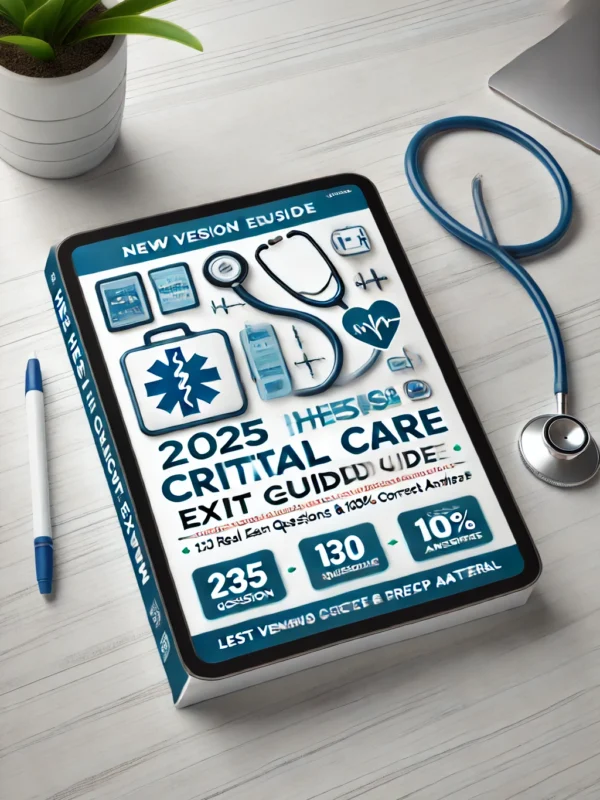
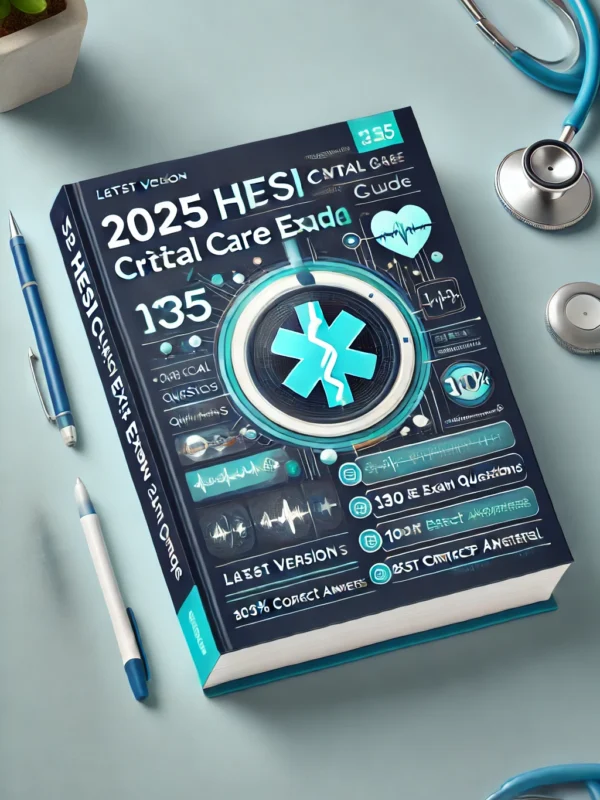
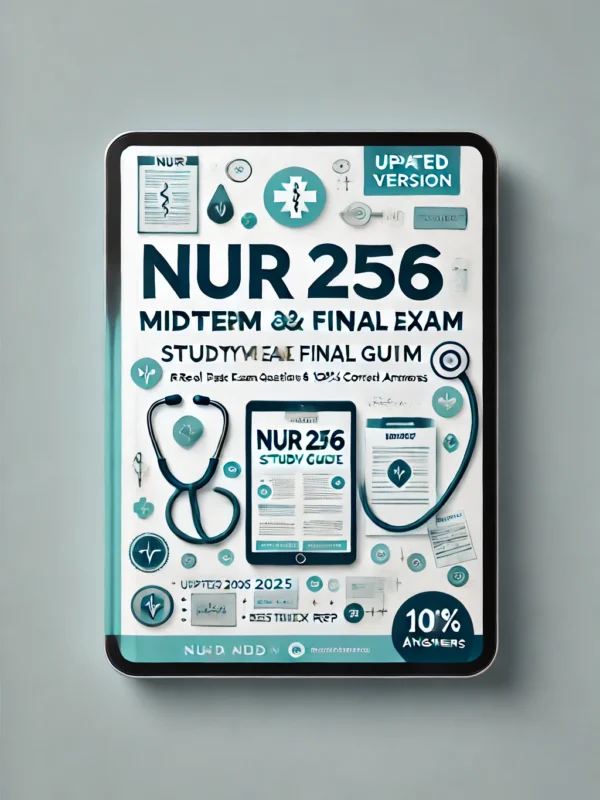
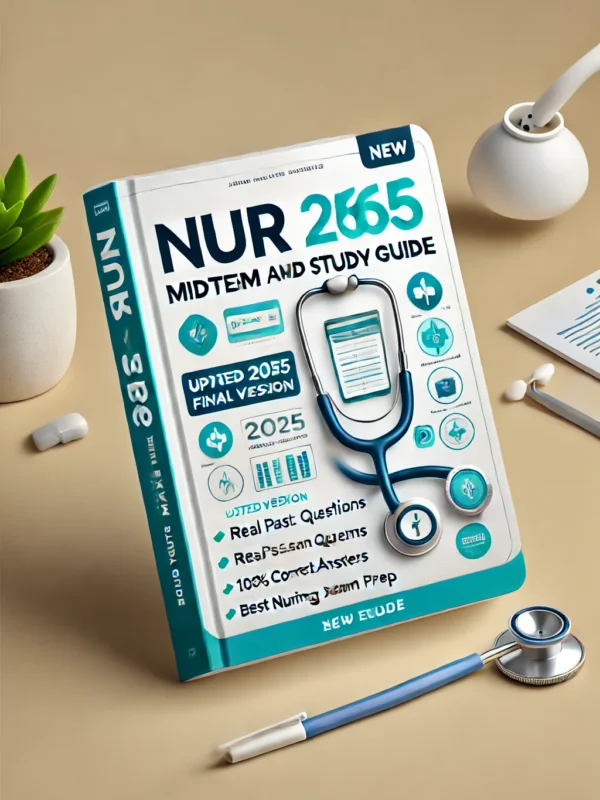

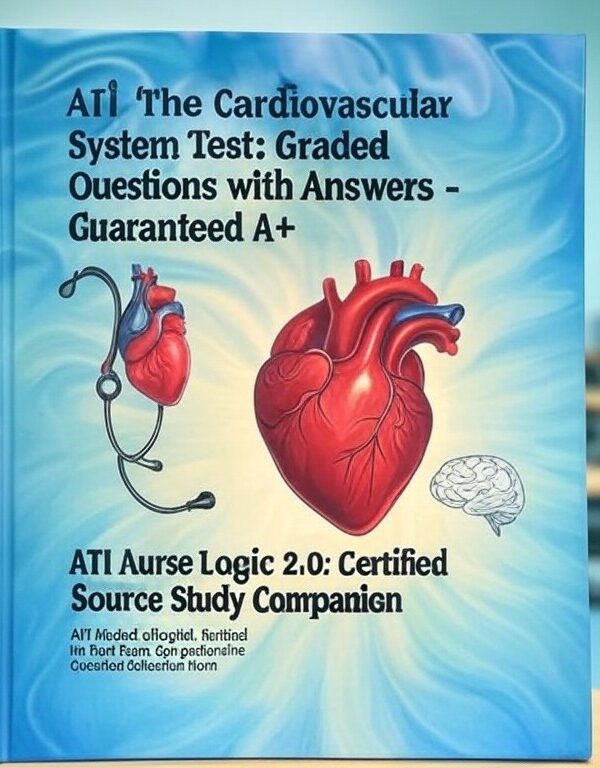


Reviews
There are no reviews yet.